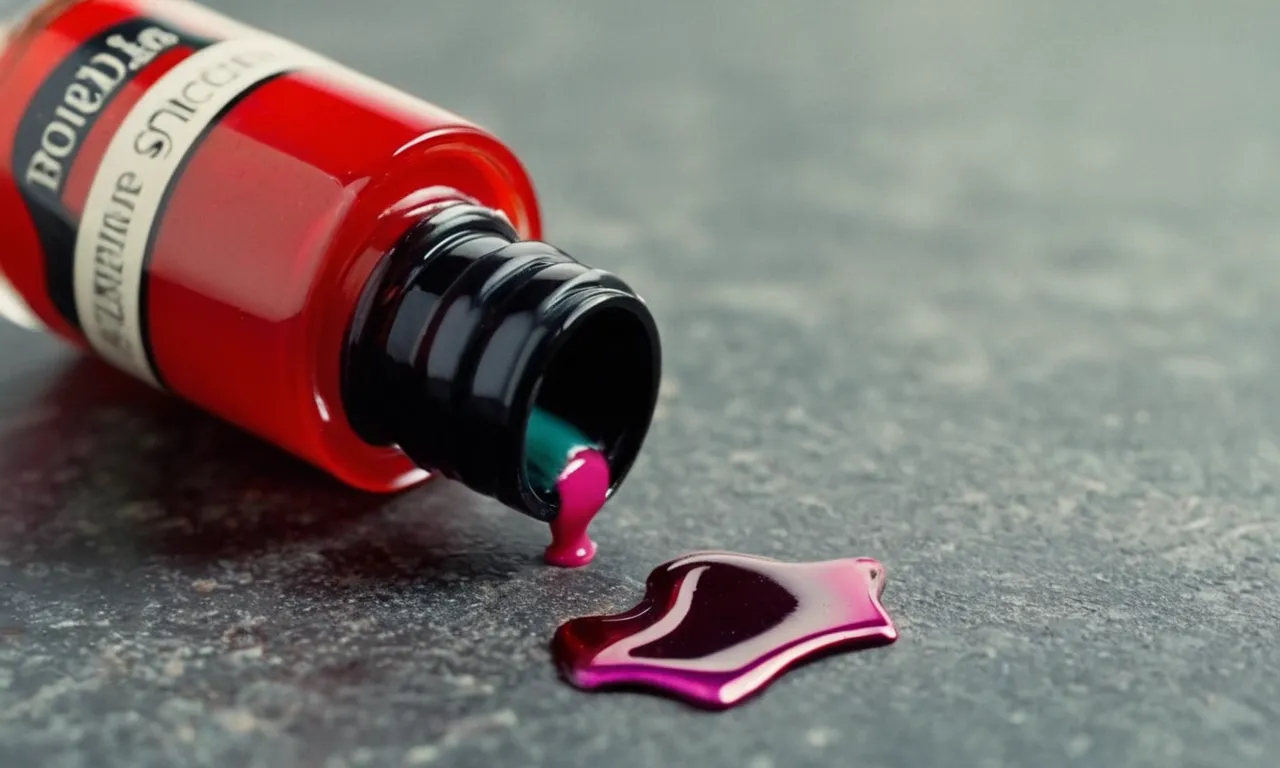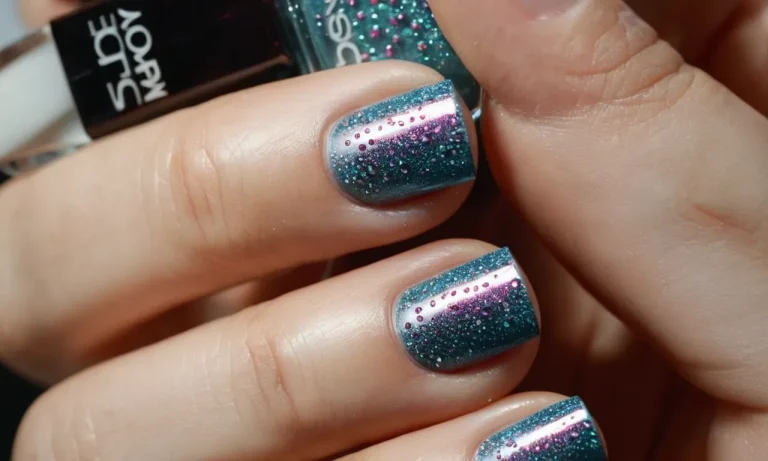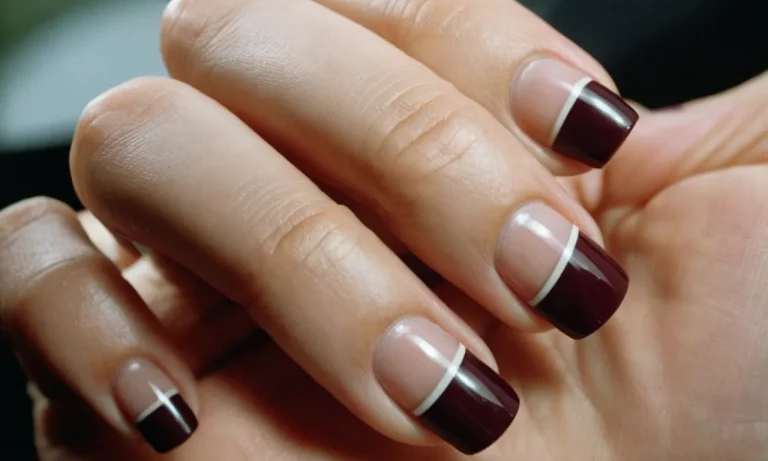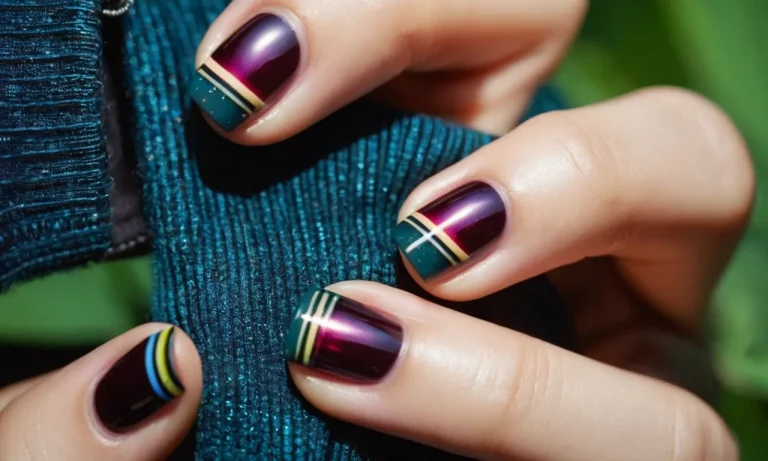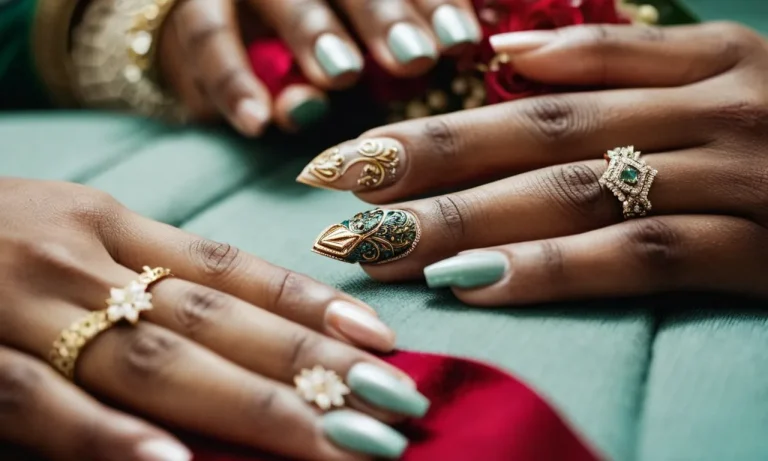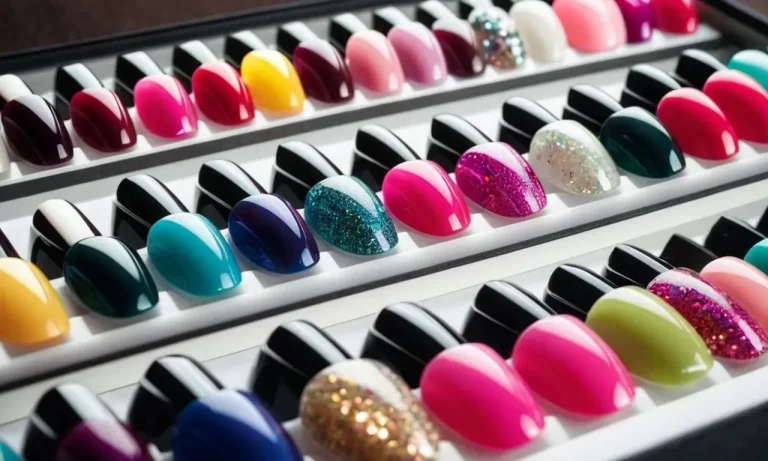Can Nail Polish Be Used As Glue?
If you’ve ever had a nail pop off or a heel come loose right before a big event, you may have wondered if nail polish can work in a pinch as an emergency glue. Nail polish is designed to bind strongly to fingernails and toenails, so it would seem like it should be able to adhere other materials too.
In this article, we’ll explore whether nail polish can truly act as a versatile household glue for quick repairs and craft projects.
If you’re short on time, here’s a quick answer to your question: Yes, nail polish can work as a temporary glue for minor household repairs and crafts if used properly. It won’t be as strong or long-lasting as dedicated glues, but nail polish can bind materials in a pinch.
How Nail Polish Adheres to Surfaces
Nail polish contains ingredients that allow it to adhere tightly
Modern nail polishes rely on a few key ingredients that enable the lacquer to stick firmly to nails without chipping or peeling quickly. The main adhesion agent in most nail polishes is nitrocellulose.
This ingredient forms a tough, flexible film that wraps around the nail when the solvents in the polish evaporate. Nitrocellulose adheres tightly due to its binding properties and chain-like molecular structure.
Other important adhesion promoters in nail polish include plasticizers like dibutyl phthalate (DBP) and camphor. These help keep the nitrocellulose flexible so it doesn’t become brittle. They also facilitate strong bonding between the polish and nail surface.
Additionally, resins like toluene sulfonamide formaldehyde resin boost adhesion and hardness. Using the right combination of nitrocellulose, plasticizers, and resins allows nail lacquer to cling to nails for days without losing its shine.
The binding properties come from nitrocellulose and plasticizers
Let’s take a closer look at why nitrocellulose and plasticizers like DBP enable nail polish to adhere so stubbornly to surfaces.
Nitrocellulose is made by chemically treating cellulose from wood or cotton with nitric acid. This results in a polymer with nitrate groups attached to the cellulose molecules. The nitrate groups allow nitrocellulose chains to stick together tightly, forming a durable film.
At the same time, the polymer chains can slide past each other easily, keeping the coating flexible. When nail polish solvents like ethyl acetate evaporate after application, the nitrocellulose molecules draw closer together and solidify into a tight, stubborn film.
Plasticizers like DBP complement this effect by embedding between the polymer chains and stopping them from bonding too rigidly. This retains flexibility in the finish. The plasticizer molecules also have chemical properties that facilitate adhesion to surfaces like fingernails.
Together, the binding ability of nitrocellulose combined with the spacing action of plasticizers results in a tenacious but flexible film that clings firmly to nails. This allows nail polish to adhere tightly for days without cracking or peeling.
So next time your manicure lasts a week without chips, you have nitrocellulose and plasticizers to thank!
Using Nail Polish as Glue for Minor Repairs
Nail polish may seem like it’s only good for decorating nails, but this versatile product can also be used as an adhesive for minor DIY repairs around the house. With some careful application, nail polish can help reattach loose items and prevent the need for more intensive repairs down the road.
It can re-affix loose soles, heels, and nails
Nail polish makes an excellent quick fix glue for minor shoe repairs. If the heel or sole of a shoe becomes loose or detached, just clean the area, apply nail polish to the separated seam, hold in place for 30 seconds, and voila! The shoe is repaired.
This trick also works great for reattaching loose nails on furniture or woodwork. Just a dab of polish helps secure the nail back in place.
Nail polish works for re-gluing broken nails or gluing on fake nails
Since nail polish was designed for use on nails, it makes sense that it can repair broken or cracked nails or adhere fake nails. For broken natural nails, start by filing the crack and cleaning the nail. Then simply brush a coat of polish over the cracked area, let dry, and seal with a topcoat.
The polish helps bond the cracked sections. For gluing on artificial nails, apply a coat of polish to the fake nail and natural nail bed first before pressing together for 30 seconds. This helps the artificial nails adhere strongly.
Use nail polish to re-adhere loose cabinet knobs, hooks, and other hardware
Nail polish is also handy for minor hardware repairs. For example, if a cabinet knob or hook starts to become loose, remove it, clean the area, add a dab of polish to the screw head or attachment, reseat the hardware, and let the polish dry.
This can gain you a few more months of use before needing to fully replace the hardware. Just be sure to use nail polish sparingly as too much can damage the hardware or surfaces.
Craft Projects You Can Assemble with Nail Polish
Affix sequins, rhinestones, and other embellishments to crafts
Nail polish is a great adhesive for affixing small decorative items like sequins, rhinestones, beads, and glitter to craft projects. It dries quickly and holds securely. Simply dot a small amount of polish onto the surface where you want to place the embellishment, then press the item into the polish.
The nail polish will dry clear and keep your decorations in place.
This technique is perfect for jazzing up frames, jewelry boxes, vases, holiday ornaments, and more. You can create beautiful designs and patterns by layering different sized and colored sequins and beads.
Nail polish glue is also useful for adhering buttons, charms, and ribbons to add interesting texture and dimension to your crafts.
Assemble jewelry pieces like bracelets and necklaces
Nail polish provides a fast, easy way to assemble jewelry components like beads, chains, and pendants. Simply add a small dot of polish where you want a piece connected, press the parts together, and in a few minutes you have a solid bond.
This jewelry craft hack works great for stringing beads onto a chain or wire to create necklaces and bracelets. You can also securely link multiple chains or cords together. For pendants, just glue a bail or loop onto the back. The nail polish will dry clear for an invisible look.
Using nail polish to assemble jewelry is faster than knotting and threading pieces together. It also creates a smooth, professional finish. This technique is perfect for kids’ craft projects or jewelry makers who want to quickly mock up design ideas.
Glue small ceramics, glass, or metal pieces in mosaic projects
For mosaic art using tiles, glass fragments, or beads, nail polish provides a strong adhesive option. Simply apply a small dot of polish onto the base surface, press the piece firmly in place, and allow to dry. The nail polish dries clear while keeping each component secured tightly.
This technique is great for crafting coasters, trivets, candle holders, mirrors, and other decorative objects with a mosaic design. Using nail polish instead of traditional glues like epoxy allows you to work faster with less mess.
It also creates a smooth finished look compared to mortar between mosaic tiles.
For best results, choose a nail polish in a thicker, gel-like formula. Test on an inconspicuous area first and let the polish fully cure for at least 24 hours before grouting. With some creative mosaic art and clever use of nail polish glue, you can make true one-of-a-kind crafts!
Tips for Using Nail Polish as Glue
Choose quick-drying nail polish formulas
When selecting a nail polish to use as glue, opt for quick-drying formulas. Traditional nail polishes can take over 10 minutes to fully cure, which isn’t ideal when you need a fast-bonding adhesive. Instead, look for polishes labeled as “Fast Drying,” “Quick Dry,” or “60 Second Dry” on the bottle.
These types of polishes set in 60 seconds or less, allowing you to move on to the next step of your project quickly.
Roughen smooth surfaces before gluing
For the strongest bond, take a bit of extra time to rough up smooth surfaces before gluing them together with nail polish. Lightly sanding areas with fine-grit sandpaper creates microscopic grooves and texture for the polish to grip onto.
You can also scratch plastic, metal, glass, and ceramic pieces with a sharp tool like an X-acto knife. Just a few seconds of abrading provides the extra traction polish needs to adhere tightly.
Apply thin layers and let dry fully between coats
When using nail polish as an adhesive, resist the urge to glop it on thickly. Multiple thin layers create a stronger bond than a single thick coat. Allow each layer to dry fully before adding the next. Follow the drying times listed on the bottle, waiting at least 60-90 seconds between polish layers.
Applying too much wet polish causes drips, messes, and a weaker bond. Patience leads to optimal strength and appearance.
Consider reinforcing with stronger glue afterwards if needed
While nail polish makes a handy glue in a pinch, for heavy-duty adhesion, consider reinforcing the bond with a stronger adhesive like superglue, epoxy, or Krazy Glue. Use just enough nail polish to tack pieces together, let it fully cure, then run a bead of industrial-grade glue along the joints for extra holding power.
The small bottle of nail polish in your purse can get you out of a sticky situation, then follow up with a stronger glue at home for a permanent fix.
Limitations of Nail Polish Glue
Won’t bond strongly to all materials like wood or plastic
One of the biggest drawbacks of using nail polish as an adhesive is that it won’t form strong bonds with all types of materials. Nail polish works decently well for gluing paper, thin fabrics, and ceramics together.
But it doesn’t have much gripping power on materials like wood, plastic, glass, or metal.
Nail polish is formulated to adhere well to fingernails, which have a unique composition. But that chemistry doesn’t necessarily translate to a strong wood-to-wood or plastic-to-plastic bond. The smooth, non-porous nature of many materials means the nail polish can’t grip and solidly fuse to the surface.
Not suitable for high-stress repairs
If you’re looking to repair something that needs to withstand a lot of force or pressure, nail polish glue is not the solution. It simply doesn’t have the strength and durability of an industrial-grade adhesive.
While nail polish may work for minor paper crafts or costume repairs, it shouldn’t be trusted for gluing broken dishware, furniture joints, or anything else that needs a super-strong bonded repair. For those situations, it’s better to use a proper wood glue, epoxy resin, contact cement, or other high-performance adhesive.
Dries rigidly, not good for flexible bonding
Nail polish forms a hard, rigid bond as it dries. That makes it unsuitable for gluing materials that need a flexible, bendable adhesive.
For example, nail polish would likely crack and fail if used to glue a rubber sole back onto a shoe. The hardness of the dried polish prevents it from flexing as the materials move. For flexible bonding jobs, other options like fabric glue, flexible epoxies, or contact cement make better choices.
Temporary solution that may need re-gluing frequently
While nail polish glue can work in certain situations, it often provides only a temporary, short-term bond. It may need reapplied every few uses or months for an item that experiences regular wear and tear.
If you use nail polish to glue on a button, don’t be surprised if it pops off after laundering the garment a few times. Or a paper clip repaired with nail polish may come loose with regular handling. For more permanent repairs, a stronger glue or adhesive tape is preferable.
Conclusion
While nail polish isn’t a heavy-duty adhesive, it can be handy for quick fixes and crafts when regular glue isn’t available. With some smart techniques, nail polish can temporarily re-bond broken items or add sparkle to projects.
Just keep in mind its limitations and take care not to use it in high-stress situations. With a bit of creativity, you may find nail polish can fill in as an adhesive in a pinch!

